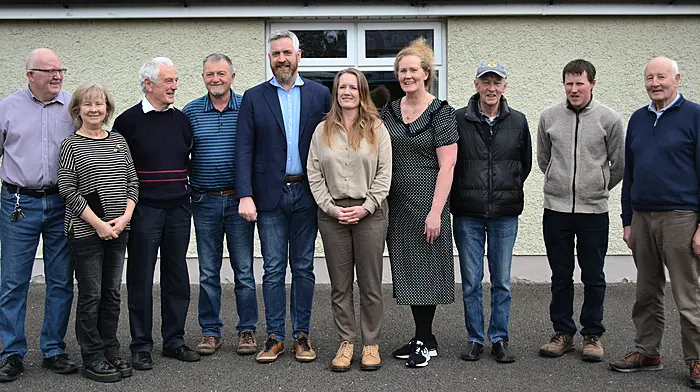AS has been said many times this week, it was time for the ‘Electric Picnic for farmers’ up in Ratheniska this week.
The three-day event was a chance for all types of farmers, their families and friends, suppliers, producers, and basically everybody involved in agriculture – and a few curious visitors – to get together and enjoy a few days out.
It is also the place where the burning issues of the day in farming are annually debated – inside the marquees and out.
And while climate change and carbon emissions are bound to have taken up a lot of ‘airtime’ this week, there was another urgent issue exercising the minds of our agricultural industry this week and last – nitrates.
It is timely, then, that our front page story this week, is about that very issue.
Last week the talk was all about derogation, and the shock announcement – timing-wise, if not content-wise – about the drop in nitrates derogation levels for Irish farmers.
Then came the confrontation with the Minister and his Fianna Fáil colleagues at the party think-in outside the Horse & Jockey hotel, and the demand for face-to-face talks with Tánaiste, Micheál Martin.
Despite all the attempts to reverse the EU decision, the feeling is very much that the derogation horse has well and truly bolted.
But as if to add insult to injury came the news at the weekend that Lough Neagh – the largest lake in both the UK and Ireland – was dying due to the high levels of nitrates in the water. Nitrates which the scientist who made the claim said, are most likely from agriculture.
An Taisce’s Dr Elaine McGoff said the news should act as a warning to farmers across Ireland. She said that Lough Neagh was an example of ‘where we are headed’ if we don’t take water quality seriously.
As if that wasn’t depressing enough, this week the Star’s Eimear O’Dwyer revealed that something similar has been happening on Lough Hyne.
Anyone who swims regularly in the lake will remember the algal bloom that occurred in the lake on a few occasions last year, making it impossible to swim – or undertake any activity – there.
And while there has been some criticism of the huge rise in human activity at the nature reserve in recent years, the two scientists who have been monitoring Lough Hyne for several decades said they don’t believe that is the cause of the huge rise in nutrients, which are taking oxygen from the water.
Researchers Colin Little and his wife Penny Stirling have been travelling to West Cork since the 70s but, as they are now in their 80s, they have made their last research trip.
Over those years, they have seen a huge drop-off in the numbers of sponges, starfish and other marine life, and say it is depressing, because it is hard to see a solution at this point.
Once nitrates get into the water in such large levels, it is difficult to find a way to extract them, they said.
They don’t suggest the nitrates are necessarily coming from the immediate land around the lake, but believe it is most likely they are being washed into the lake, which is connected to the sea at Barlogue creek.
There is evidence of nitrates in the water all along the south coast, they say, and these are the most likely culprits for the affected waters of Lough Hyne.
We have also heard a number of times this week that the once-pristine 500+ rivers and lakes around Ireland have been reduced to a number under 50 since the 80s, with the rest seeing worrying levels of pollution.
Farmers are feeling victimised by the environmental lobbyists – and for sure they seem to be taking an unfair share of the burden, while the transport and energy-heavy technology industries are keeping very quiet.
But when it comes to water – the source of all life – it is essential that we stop the blame game, and work together to find a way to ensure we eradicate harmful pollution.
Because what is a problem for a few thousand farmers right now, will very soon become a problem for us all.










